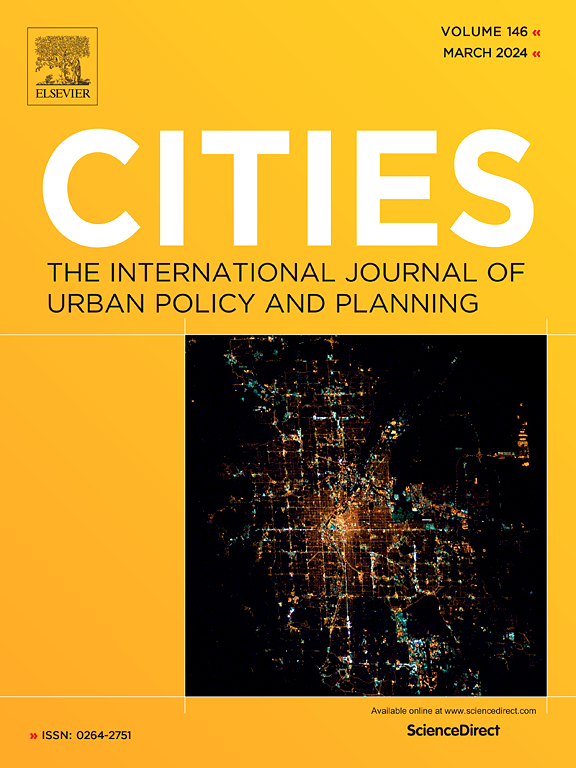Quantifying residential cooling poverty and its drivers in China (2001–2020): Insights from multiple restrictive behaviors of accessing air conditioning
IF 6
1区 经济学
Q1 URBAN STUDIES
引用次数: 0
Abstract
While the increasing frequency and intensity of extreme heat highlights the importance of residential cooling, its effectiveness is largely undermined by residential cooling poverty (RCP). However, the manifestations and drivers of RCP are not well understood. To accurately quantify RCP, we here identify three incremental restrictive behaviors of accessing air conditioning (AC) and integrate them to propose a heat tolerance (HT) index. Using >100,000 household data from the China Urban Household Survey, we first show the effectiveness of the HT index; the HT index identifies over 36 % more disadvantaged cities on average than using these three restrictive behaviors alone. Moreover, we examine the heterogeneity in the spatiotemporal distribution and determinants of RCP. Results show that despite the downward trend of RCP nationwide in two decades, inequality persists, particularly in southern cities. The Gini index of RCP is 50 % more pronounced in southern cities (0.18) than in northern cities (0.12) due to higher inequities of AC ownership in the South. The RCP is mainly driven by the polarization of economic status (e.g., household income) in the South, while more amplified by social factors (e.g., educational attainment) in the North. Our findings contribute to a deeper understanding of residential cooling poverty and inform more targeted public policy in response to ameliorate cooling restrictions nationwide.
中国住宅制冷贫困及其驱动因素的量化分析(2001-2020):来自获取空调的多重限制行为的见解
虽然极端高温的频率和强度的增加凸显了住宅制冷的重要性,但其有效性在很大程度上受到住宅制冷贫困(RCP)的影响。然而,RCP的表现和驱动因素尚不清楚。为了准确地量化RCP,本文确定了三种使用空调(AC)的增量限制行为,并将它们整合为耐热性(HT)指数。利用中国城镇住户调查的10万户数据,我们首先证明了HT指数的有效性;与单独使用这三种限制性行为相比,HT指数确定的弱势城市平均多出36%。此外,我们还研究了RCP的时空分布和影响因素的异质性。结果表明,尽管近20年来全国RCP呈下降趋势,但不平等现象依然存在,尤其是在南方城市。南方城市的RCP基尼指数(0.18)比北方城市(0.12)高出50%,这是由于南方城市的AC所有权不平等程度更高。RCP主要由南方的经济地位(如家庭收入)两极分化驱动,而北方的社会因素(如受教育程度)则进一步放大。我们的研究结果有助于更深入地了解住宅制冷贫困,并为更有针对性的公共政策提供信息,以应对全国范围内改善的制冷限制。
本文章由计算机程序翻译,如有差异,请以英文原文为准。
求助全文
约1分钟内获得全文
求助全文
来源期刊

Cities
URBAN STUDIES-
CiteScore
11.20
自引率
9.00%
发文量
517
期刊介绍:
Cities offers a comprehensive range of articles on all aspects of urban policy. It provides an international and interdisciplinary platform for the exchange of ideas and information between urban planners and policy makers from national and local government, non-government organizations, academia and consultancy. The primary aims of the journal are to analyse and assess past and present urban development and management as a reflection of effective, ineffective and non-existent planning policies; and the promotion of the implementation of appropriate urban policies in both the developed and the developing world.
 求助内容:
求助内容: 应助结果提醒方式:
应助结果提醒方式:


